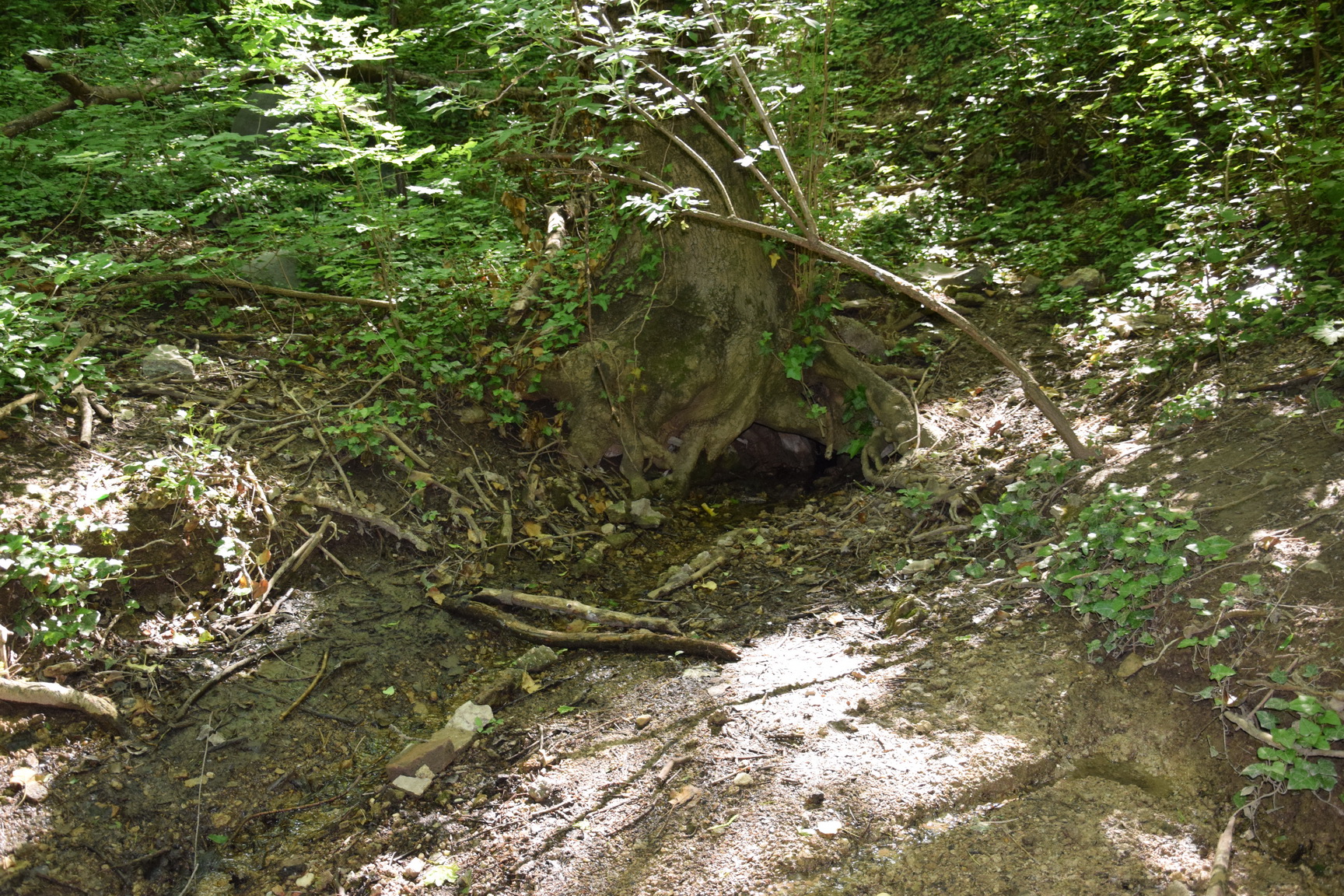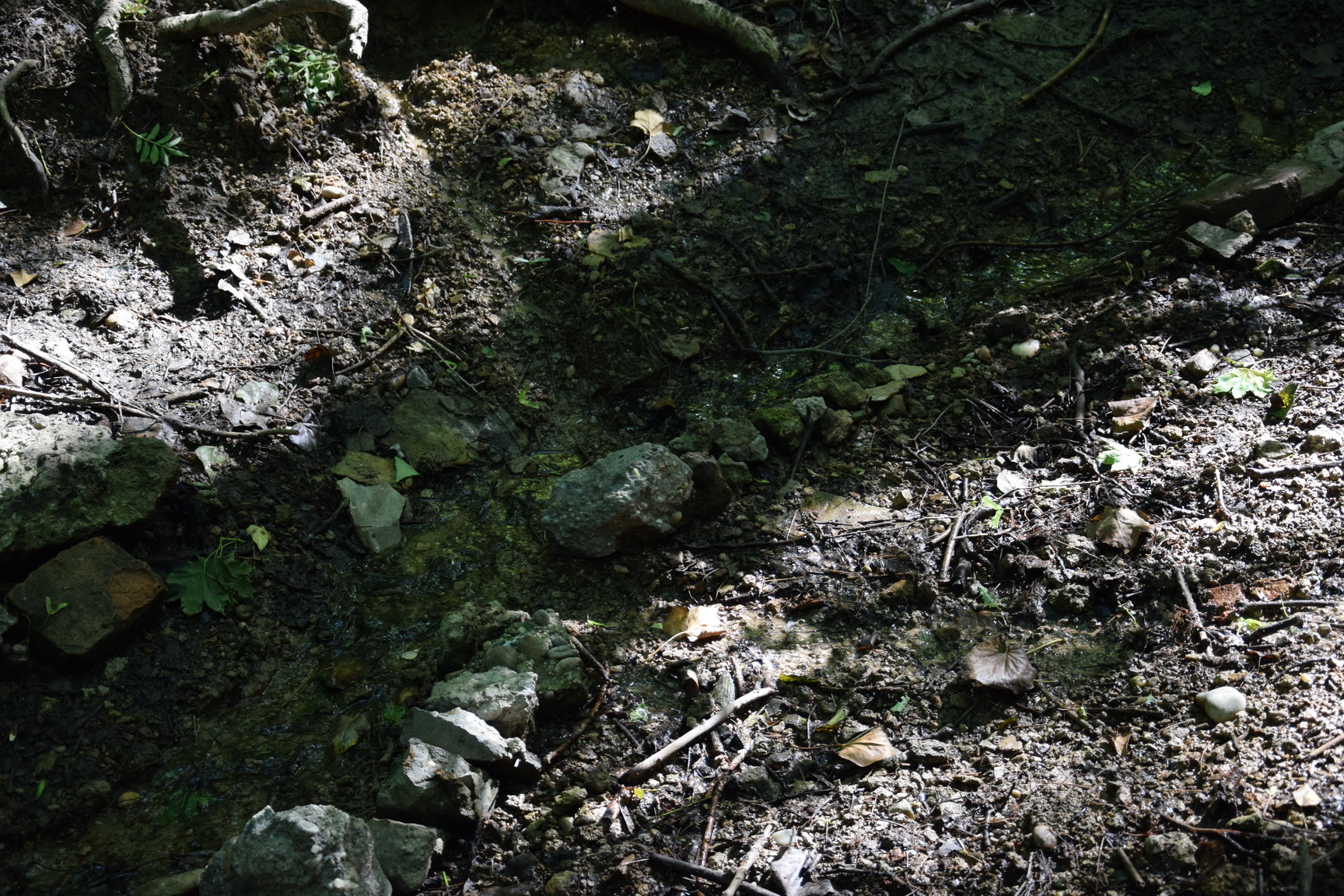Schmidt spring
The Schmidt Spring is one of the most interesting attractions on the trail, not only for its spectacular scenery, but also for the spectacular rate of change. Initially it produced a significant flow, unlike today, but today the exact location of its emergence is difficult to determine (often only indicated by the muddy ground):
| Date | Measured value |
|---|---|
| 1998 | 40 l/min |
| 2006 | 1,5 l/min |
| 2019 | not measurable |
The Kiscelli escarpment itself is karstic, but the Schmidt Spring and the Chapel Spring, described earlier, are groundwater aquifers. It breaks the surface between the roots of a flowering ash tree, which in the growing season looks as follows:

During rainy weather, it is possible to observe the spring-fed ore:

Overall, the exact location of the source is difficult to determine. The presence of the Schmidt spring is indicated only by the presence of traces of puddles in the forest. Its rapidly declining water yield suggests anthropogenic influence, the rate of decline being such that it is no longer being investigated by students at the University of Óbuda. The source cannot be traced back to the water run-off, which seeps into the forest floor for about 50 metres.


